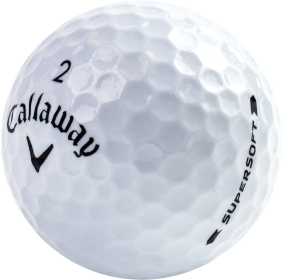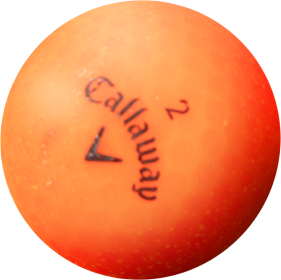Master Your Pre-Shot Routine: 4 Steps That Transform Your Swing (From a +3 Handicap)

Whether you’re a weekend hacker or a serious golfer chasing single digits, your pre-shot routine may be the single biggest lever left untapped. It’s not the flashy swing move or exotic training aid — it’s what you do before you swing that often separates consistency from chaos.
In this post, we’ll dig deep into a 4-step pre-shot routine used by a golfer we sponsor +3 handicapper Roman Ramirez, he explains why each step matters, how to internalize it, and common mistakes that derail even good setups. Use this as your new mental & physical checklist — and watch how your round changes.
Why does a Pre-Shot Routine Matter? (and the Science Behind It)
-
Consistency under pressure
When nerves kick in, your subconscious wants a sequence to lean on. A routine gives your brain structure so it doesn’t reinvent the wheel under stress. -
Better decision-making
Rushing into swing mode lets your mind skip key questions (start line? shot shape?). A routine forces you to slow down and think clearly. -
Physical setup & tempo alignment
Your body needs small checks (posture, swing feel) before you commit. A routine gives you space to confirm everything. -
Reduced second-guessing
Once you commit, there’s no turning back. That confidence often turns “maybe I should adjust” into “I swing now.”
Golf science backs this: studies on motor skill execution show that pre-performance routines (in sports like golf, tennis, basketball) enhance focus, reduce error, and stabilize performance under pressure.
The 4-Step Routine Roman Ramirez Uses (And Why Each Step Counts)
Here’s Roman’s go-to sequence. I’ll break each step down and show you how to make it your own:
| Step | What Roman Does | Why It Helps | How You Can Practice It |
|---|---|---|---|
| 1. Think about start line | Before touching the ball, he visualizes where the ball should start | You lock in target line early, avoid later alignment guessing | Use a club or alignment stick on the ground; stare at it for 2–3 sec before setting up |
| 2. Visualize shot shape | He sees the curve or shape the ball will take (draw, fade, straight) | You program your brain toward a “solution,” not just swing | After line set, mentally play 1–2 “flights” of that ball in your mind |
| 3. Practice swing routine for feel | One or two dry swings “with feel,” not necessarily full speed | Settles your rhythm, warms the body, reinforces intended feel | Do slow-to-medium tempo swings, focusing on the motion you want |
| 4. Commit 100% to the swing | No hesitation — once you’re set, you swing | Hesitation breeds mishits, blocks, flip, etc. | Use a trigger (like counting “3-2-1 swing”) so your brain flips the switch |
How These Steps Help Under Pressure
-
When your shot is tight or nerves creep in, you can fall back on this exact sequence.
-
Because you're rehearsing mental and physical elements before swing, you reduce “in the moment” scrambling.
-
It creates muscle memory not just for the swing but for your decision-making process.
Common Mistakes & How to Avoid Them
-
Skipping step 1
Many golfers walk up and immediately address the ball. Without picking line first, alignment often drifts. -
Overthinking shot shape
Don’t try to micromanage. Visualize a general curve or shape, not every tiny detail. -
Using “wild” practice swings
If your practice swings are too ballistic or wrong, you’re training bad feel. Keep them smooth and in line with your intended motion. -
Committing half-heartedly
If your brain is still undecided when you swing, you lose control. Use a physical or verbal trigger to “lock in.” -
Changing mid-swing
Once you commit, no adjustments — especially at address. Trust your setup and you’ll see better consistency.
How to Train This Routine (Drills + Tips)
-
Mirror walkthroughs
At home, without a club, walk through the 4 steps while visualizing shots. Reinforce the mental order. -
Range-only routine runs
On the range, do full shots but slower speed — always using your full 4-step routine. Do 20–30 in a row with no skipping. -
Pressure mimic drill
Pretend there’s a “money shot” (say, 7-iron into a pin). Use your 4 steps each time. Whoever misses, resets. Build mental toughness. -
Video & voice reminder
Record yourself (phone or GoPro). Listen to your internal thoughts — are you skipping steps? Visual cues help. -
Dry repeats at home
Use your living room, backyard, or garage. Even without a ball, you can practice the walk-up, alignment, visualization, commit. Reinforcing physical memory.
How This Routine Integrates with Other Tips (Like Shaft Angle for Flop Shots)
Earlier, we talked about how shaft angle, clubface control, and precise flop shot technique can make or break your short game. The pre-shot routine is the glue that locks those technical elements into place.
-
When you're thinking start line first (step 1), you prevent misalignment from messing up your shaft angle.
-
Shot shape visualization (step 2) helps you “feel” the curve you want — critical when you're trying to use shaft angle adjustments.
-
The practice swing (step 3) lets you test your flop or other shot feel before committing.
-
Full commitment (step 4) ensures you don’t revert to old habits mid-swing.
In other words: the routine is the mental scaffolding that supports the technical work.
Sample Walkthrough (From Tee to Finish)
Let’s walk through a real scenario:
-
You’re 80 yards from the green. Thick rough in front, a bunker left, flag in the back right.
-
Step 1: Look at a faint ridge toward the middle of the green — that’s your start line.
-
Step 2: Visualize a gentle fade or soft straight ball landing around 15 feet past the bunker, rolling toward the hole.
-
Step 3: Take one practice swing — feel the release, feel the tempo, feel the shaft path you want.
-
Step 4: Say to yourself (silently or out loud) “Commit,” then address and swing.
Even if you mis-hit, you’re hitting with intention and clarity — which gives you better feedback to learn from.











